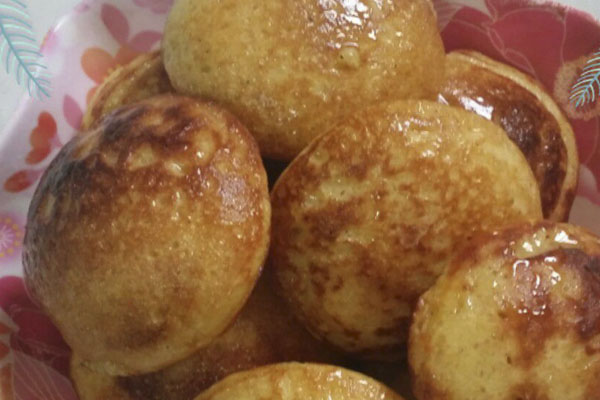Intriguing Swahili Delicacies from the East African Community

The Swahili community has been in existence long before the 2nd century AD. The community grew as a result of intermarriages between Arabs and Africans living along the coastal lines as they traded. Consequently, this community developed a rich culture and their cuisine is one of a kind. Now, let’s get to know more about some of their delicacies to wallow in while visiting the area, shall we?
Vilosa (semolina donuts)
These are a favorite dessert and breakfast menu. Different households flavor them differently. However, the key ingredient is a mixture of semolina and rice flour. Traditionally, Vilosa were made from rice soaked overnight. Soaked rice is still a common substitute today if you don’t have store bought rice flour.

Quick Recipe
- 1/2 cup rice flour mixed with 1 cup semolina.
- Add sugar (1 tsp), yeast (1 tsp), 2 eggs, coconut milk (3/4 cup), whole milk (1/4 cup) and cardamom (or a mild flavoring of your choice).
- Knead well and cover with a wet towel until the dough doubles in size. (30-45 minutes). You can place the dough in a warm oven to hasten the process.
- Punch out the air, roll into thick circles, and cut into circular shapes.
- Deep fry in hot oil till brown and enjoy with a cup of tea.
- You can also soak them in syrup for additional flavor.
Mchuzi Wa Pojo (Green Grams)
Green grams, beans, and lentils are common cereals among the Swahili community. But green grams are a favorite among many. Boiling of cereals is reserved for a particular day of the week. They usually boil all types of cereals and stock them in the refrigerator ready for final cooking. Here’s a quick recipe that applies to all of the above cereals.

Quick Recipe
- Sauté your onions until brown (this is the secret! Let the onions brown well – but not burnt).
- Add a few spices to your liking (Swahilis use garam masala, cumin, and ground coriander).
- Add sliced capsicum, grated carrots, sliced tomatoes, and a little tomato paste (like a tablespoon).
- Cook until the mixture is almost mushy then add one cup of milk for two cups of pre-cooked green grams.
- Cover and let it simmer on low heat for 10 minutes.
- Serve hot with white rice or chapatti.
Chapati (Flatbread)
In India, they call it Roti. But in the Swahili community, they add vegetable oil to enhance the flavor further and hence the name “chapati.” Traditional Chapati was made from white wheat flour, but due to the recent cancer concerns, the community is gradually transitioning to whole wheat chapatis.
Quick Recipe
- For 1 cup of water, add two cups of wheat flour (If using whole grain flour, add an extra half a cup of flour).
- Knead until gluten forms (3-5 minutes using an electric mixer).
- Cover with a wet towel and let the dough rest for 15-30 minutes.
- Portion the dough into small round balls (the above ratio yields 8-12 balls depending on how thick you want your chapatti).
- Roll out these balls into circles and cook on a hot skillet until tiny brown marks appear.
- Now add oil and spread your chapati until the brown marks become pronounced.
- Flip and cook on the other side.
- Serve with curried lentils or an accompaniment of your choice.
Matoke(Green Bananas)
Matoke is prepared from specific groups of bananas which are medium sized and green in color. It’s a staple food in the Swahili community. Preparations differ from house to house, but the basics remain.
Quick Recipe
- Peel and clean your bananas then boil them in salty water.
- Once softened, mush and enjoy them with your favorite sauce and vegetables.
- Alternatively, you can fry the mushy mixture with onions, tomatoes, and butter to add more flavors.
- You can also enjoy them whole without mushing.
Muhogo Wa Rojo (Stewed Cassava)
Cassava is a well-respected ingredient. Swahili people believe that if a woman consumes cassava before conceptions, she is likely to have twins and triplets. They also argue that men perform better in bed when served with this delicacy. So how do you make muhogo was rojo?

Quick Recipe
- Peel and wash the cassava.
- Portion into bite-size pieces.
- Sauté your onions and add a few spices (Swahili people usually add pepper, ginger, nutmeg, and cumin).
- Add the cassava and enough water to cover them.
- Cook under low heat until tender.
- Serve hot and enjoy!
Image credit: pixabay
Sign up for FD's newsletter
The freshest stories from the food and dating world every week.




